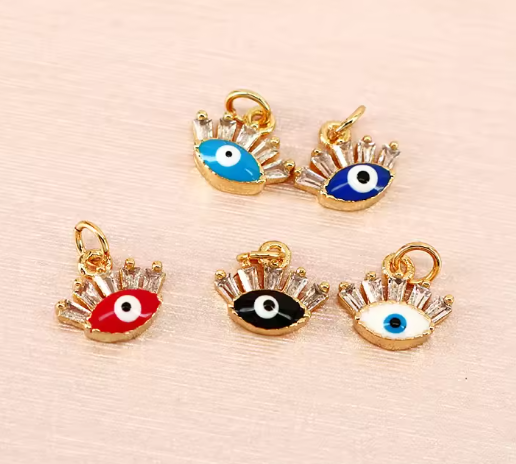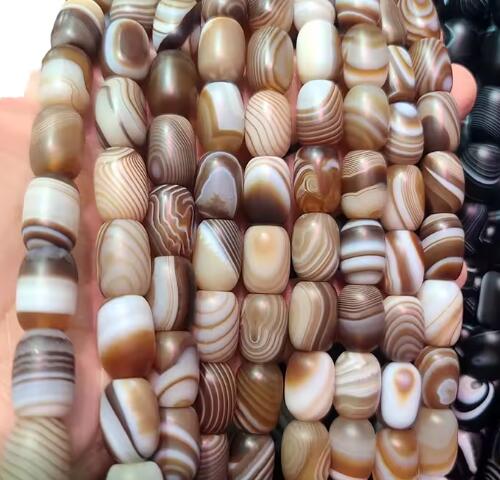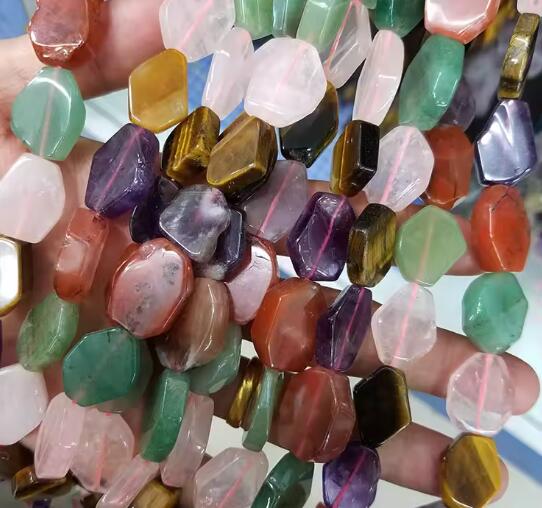Does Stainless Steel Jewelry with Matte Surface Treatment Reduce the Visibility of Fingerprints?
If you’ve ever owned glossy stainless steel jewelry, you’re likely familiar with the frustration: a single touch leaves behind unsightly fingerprints, forcing you to pause and wipe the surface clean repeatedly. But what about stainless steel jewelry with a matte finish? The answer is unambiguous: Yes, stainless steel jewelry treated with a matte surface significantly cuts down on fingerprint visibility—and the reason boils down to how light interacts with the metal’s texture. Unlike glossy finishes that amplify every smudge, matte surfaces diffuse light, masking fingerprints while adding a sophisticated, modern aesthetic. Let’s break down the science behind this effect, how matte compares to other finishes, and practical tips for keeping matte stainless steel jewelry looking its best.
1. The Science: Why Matte Hides Fingerprints (and Glossy Finishes Don’t)
The core difference lies in the surface texture of the metal and its impact on light reflection:
-
Glossy Stainless Steel: Shiny finishes are created by polishing the metal to an ultra-smooth, flat surface—one that acts like a miniature mirror. When you touch the jewelry, your fingers transfer oils and moisture (the primary components of fingerprints) onto this smooth surface. These oils form a thin, reflective layer that bounces light back uniformly, making the fingerprint stand out sharply against the glossy background. Even a faint smudge becomes obvious, especially under bright light (like sunlight or store lighting).
-
Matte Stainless Steel: Matte finishes are achieved through processes like sandblasting (using fine abrasive particles to texture the surface), brushing (creating tiny, non-uniform lines), or chemical etching (dissolving small areas of the metal to create a rough texture). These methods leave the surface with microscopic, uneven ridges—too small to see with the naked eye, but enough to disrupt light reflection. Instead of bouncing light back uniformly like a mirror, the textured surface scatters light in multiple directions. When fingerprints land on this matte surface, the scattered light obscures the oil’s reflective layer—causing the smudge to blend into the texture rather than stand out. You might still leave a fingerprint, but it’s far less noticeable, even in direct sunlight or under harsh indoor lighting.
2. Real-World Use Cases: Where Matte Stainless Steel Excels
Matte stainless steel jewelry’s fingerprint-resistant property shines in everyday scenarios where glossy pieces would struggle:
-
Everyday Wear: For pieces you wear from morning to night—like a matte stainless steel bracelet, ring, or pendant—fingerprint resistance is a game-changer. Whether you’re typing at your desk, cooking dinner, or hugging a friend, you’ll touch the jewelry frequently—but fingerprints won’t ruin its appearance. A quick wipe with your sleeve (no need for a dedicated cleaning cloth) is usually enough to refresh the surface.
-
High-Touch Jewelry: Rings and bracelets are touched more often than earrings or necklaces, making them ideal for matte finishes. A matte stainless steel ring, for example, won’t show smudges from opening doors, scrolling through your phone, or carrying groceries—unlike a glossy ring that would require constant wiping to look clean.
-
Bright or Public Settings: At outdoor events (like concerts or beach days), under office lights, or in retail stores, glossy jewelry’s fingerprints become even more prominent. Matte pieces, however, hold their own in these conditions: the diffused light keeps smudges hidden, so your jewelry maintains a polished look all day—no matter how many times you touch it.
3. Matte vs. Other “Fingerprint-Resistant” Finishes: A Comparison
Matte stainless steel isn’t the only option for minimizing fingerprints, but it offers unique benefits that set it apart:
-
vs. PVD-Coated Glossy Stainless Steel: Some brands apply PVD (Physical Vapor Deposition) coatings—thin, durable layers of metal (like rose gold or black)—to glossy stainless steel to reduce fingerprints. While PVD coatings do make smudges less sticky, they still have a smooth, reflective surface. This means fingerprints are still visible (just less so than on uncoated glossy steel), and the coating can wear off over time with heavy use.
-
vs. Brushed Stainless Steel: Brushed finishes fall between matte and glossy, with fine, parallel lines created by brushing the metal with an abrasive pad. They hide fingerprints better than glossy finishes, but not as well as matte. The parallel lines can catch light in certain angles, making smudges slightly visible—especially if the lines are shallow. Matte’s more irregular texture offers better overall fingerprint hiding.
-
vs. Ceramic-Coated Stainless Steel: Ceramic coatings are highly effective at repelling fingerprints, as they create a non-stick surface. However, ceramic coatings are thicker than matte textures and can chip or crack if the jewelry is dropped, scratched, or exposed to impact. Matte stainless steel, by contrast, has no additional coating to damage—it’s a textured part of the metal itself, making it more durable for long-term wear.
4. How to Care for Matte Stainless Steel Jewelry (and Preserve Its Fingerprint Resistance)
While matte stainless steel hides fingerprints well, it still needs basic care to maintain its texture and appearance:
-
Clean Gently: For light dust or smudges, use a soft, dry microfiber cloth to wipe the surface—avoid paper towels or rough fabrics, which can scratch the matte texture. For tougher dirt (like lotion or food residue), dampen the cloth with warm water and a drop of mild dish soap, then wipe gently. Dry immediately to prevent water spots.
-
Avoid Oily or Abrasive Products: Try not to touch your jewelry right after applying lotion, sunscreen, hand sanitizer, or hair products—these oily substances can leave heavy residues that are harder to wipe off (even on matte surfaces). Also, steer clear of abrasive cleaners (like steel wool, scouring pads, or harsh chemicals) that can smooth out the matte texture over time.
-
Store Properly: When you’re not wearing your matte stainless steel jewelry, store it in a soft, lint-free pouch or a jewelry box with individual compartments. This prevents scratches from other jewelry (like rings with gemstones or sharp edges) that could damage the matte texture—and with it, its ability to hide fingerprints.
In summary, if you’re tired of constantly cleaning fingerprints off your stainless steel jewelry, a matte surface treatment is the ideal solution. It effectively masks smudges, performs well in everyday and bright environments, and offers a durable, modern look that complements any style. Whether you’re searching for a daily-wear ring, a versatile bracelet, or a minimalist necklace, matte stainless steel lets you enjoy the strength and longevity of stainless steel—without the hassle of constant wiping.









